Silca launches its 'Ultimate Tubeless Sealant', powered by carbon fibre
The aim is very much to do just what it says on the tin – or bottle
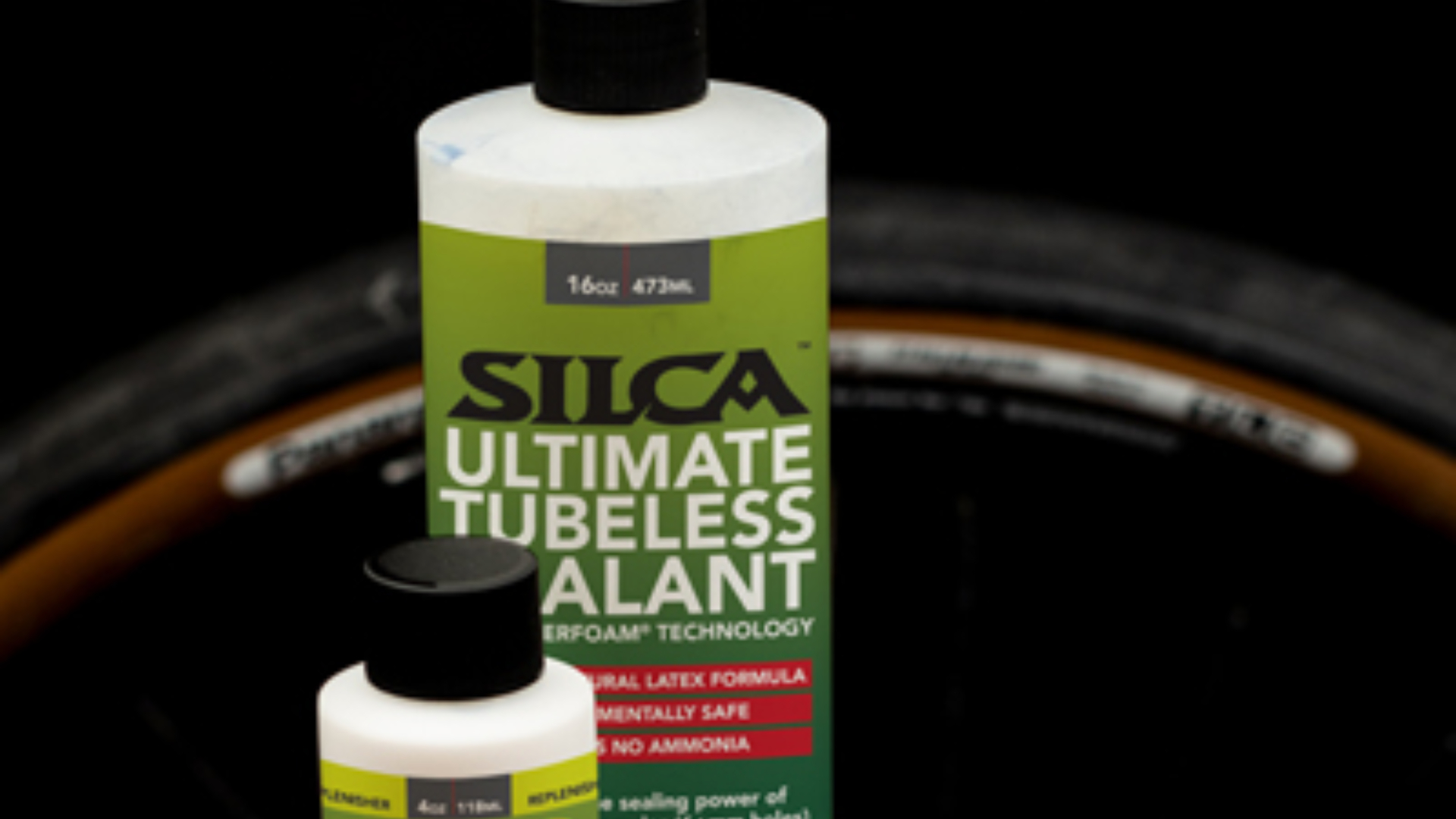

Silca, the American producer of lovingly engineered pumps, tools and accessories, has applied that same approach of forensic design to tyre sealants – with the result being the brazenly named Ultimate Tubeless Sealant.
The headline stats are that it’s claimed to seal +6mm holes (as high as 8mm) and up to holes 6mm at road pressures of 80 - 90 psi. In terms of longevity, the sealant can last a whole year – with the right care – while the tested temperature range dips down to 10°F / -12°C . It might go lower, but it hasn’t been cold enough around Silca’s headquarters this winter to find out.
In terms of price, the sealant costs $38.00 / £36.00 for a 32oz bottle, while Stan’s No Tubes Race Sealant comes in at $44.00 / £40.00 for 32oz and Wiggle’s in-house brand, Lifeline, will sell a 950ml bottle (similar size) for $33.99 / £22.99.
You can order the sealant from Silca's website here, but what's really quite fascinating is the what Silca has done with its formula.
How does the sealant work?
The way most sealants work is by taking some natural or synthetic latex and thinning them with some sort of solvent and adding antifreeze. Sometimes the antifreeze is the solvent, which streamlines things. To boost the sealing power of their sealants, many companies add particles to their mixtures to help better clog up the cuts and punctures. These can be anything from glitter to walnuts to microplastics and fibreglass.
Silca’s research showed that often these particles can struggle to get to the site of the puncture, with the wheel essentially acting as a massive centrifuge, pinning the particles in place against the carcass of the tyre, unable to move.
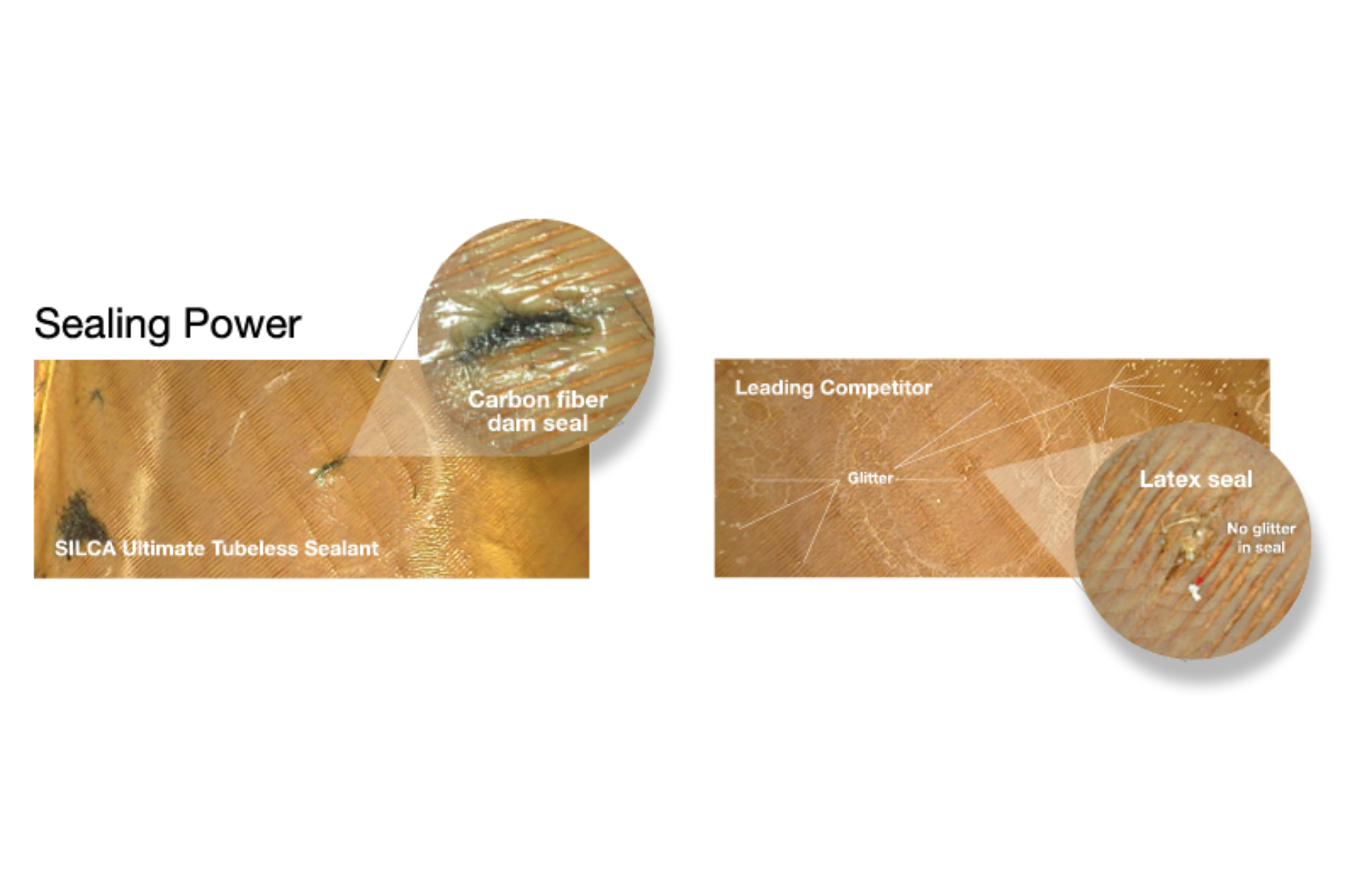
To address this limitation, Silca’s approach was two-fold. First, a foaming solution was developed instead of a simple liquid. From observing the performance of Effetto Mariposa Caffelatex sealant – a foamy one – Silca found this a much more effective solution for transporting particles.
Second was to use a particle that’s super light and thus better able to still move about the solution – despite the centripetal force of the spinning wheel. For this, Silca went with unsized carbon fibre.
Not only are these supposed to be able to get to the puncture hole more effectively, Silca says they can also stack on top of each other, a bit like a dam. This is especially useful for higher pressure systems. If you get a puncture with a road tyre, the sealant will likely seal very easily at low pressures.
Then, when you’re inflating the tyre, you might break the seal, but then the carbon fibres will build upon themselves again, resealing and making for a stronger seal. Even on very narrow tyres, Silca claims this process means their sealant can result in punctures effectively remaining sealed at higher pressures.
Longevity
Most sealants use a form of antifreeze to keep their particles suspended, which leads to a trade off: Increase the proportion of particles and the sealant will seal better. However, that means the sealant will also dry out quicker and need to be topped up more often.
You can see this directly with various sealant brands offering different products for maximum-protection or maximum-endurance.
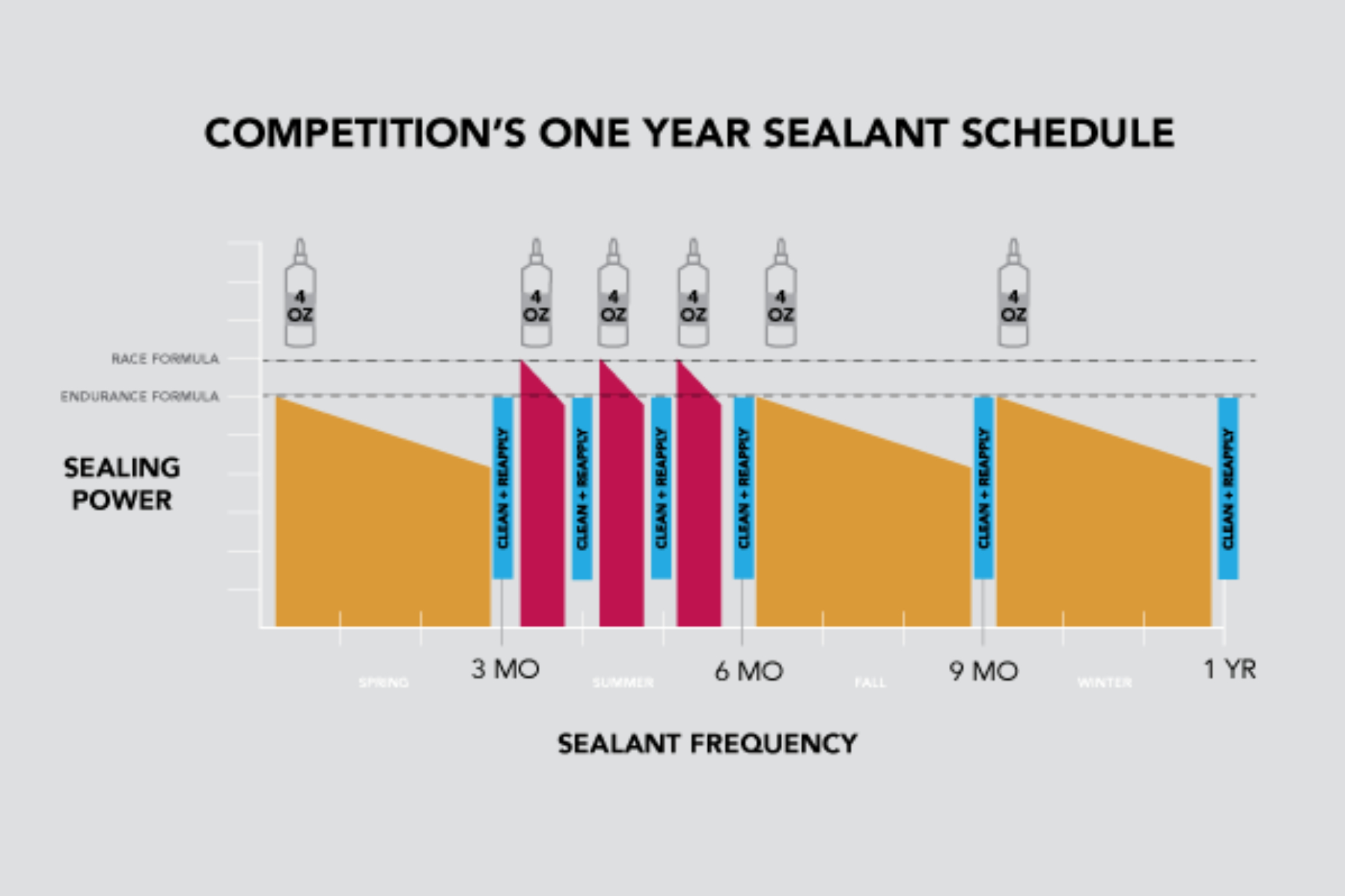
With Silca’s combination of carbon fibre particles and foaming solution being as effective as they’re claimed, the American brand believes it can offer puncture protection superior to its competitors’ race sealants, whilst also not having to make the same sacrifices in terms of longevity.
The claimed average maintenance schedule of 3–4 months (potentially a month longer or shorter depending if you live in cool and humid conditions or hot and dry).
In addition to that, as the main limitation to the longevity is the drying up of the fluid, Silca is supplementing its tubeless sealant with a tubeless replenisher. This allows you to top up the tyre directly through the valve – other sealants of similar claimed puncture protection tend to require being poured directly into the tyre.
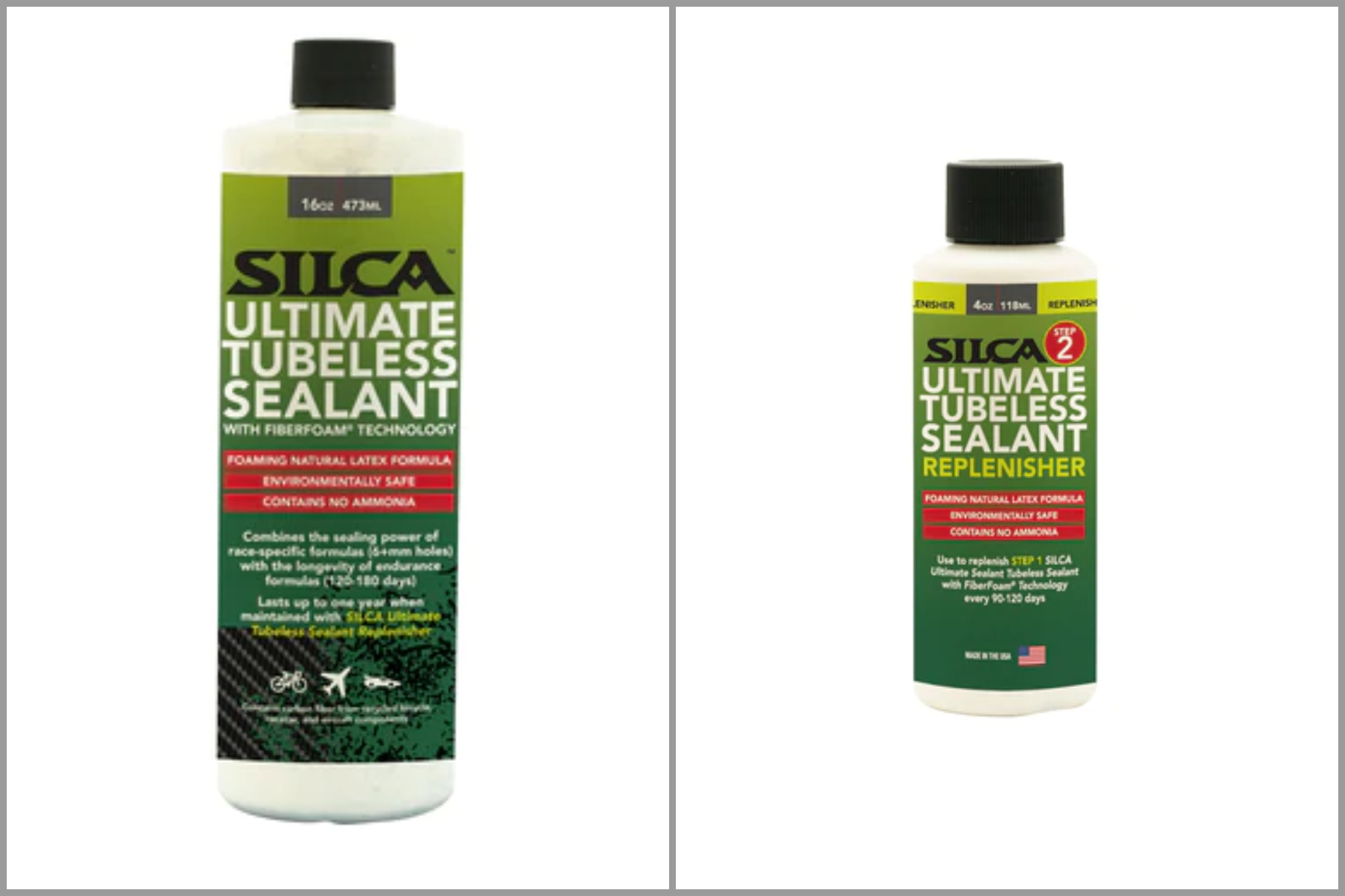
Although the Silca's sealant is quite competitively priced with other high performance sealants at $38.00 / £36.00 for a 32oz bottle, the price of the replenisher seems incongruously high. On Silca's website it's currently down as $12.00 / £12.00 for a 4oz bottle.
That puts the replenisher at $3.00 / £3.00 an ounce – which is significantly higher than the sealant's $1.19 / £1.13 an ounce. It's true that the replenisher does save some work, being simply injected straight through the valve, but for that price difference, many will likely just stick to the sealant.
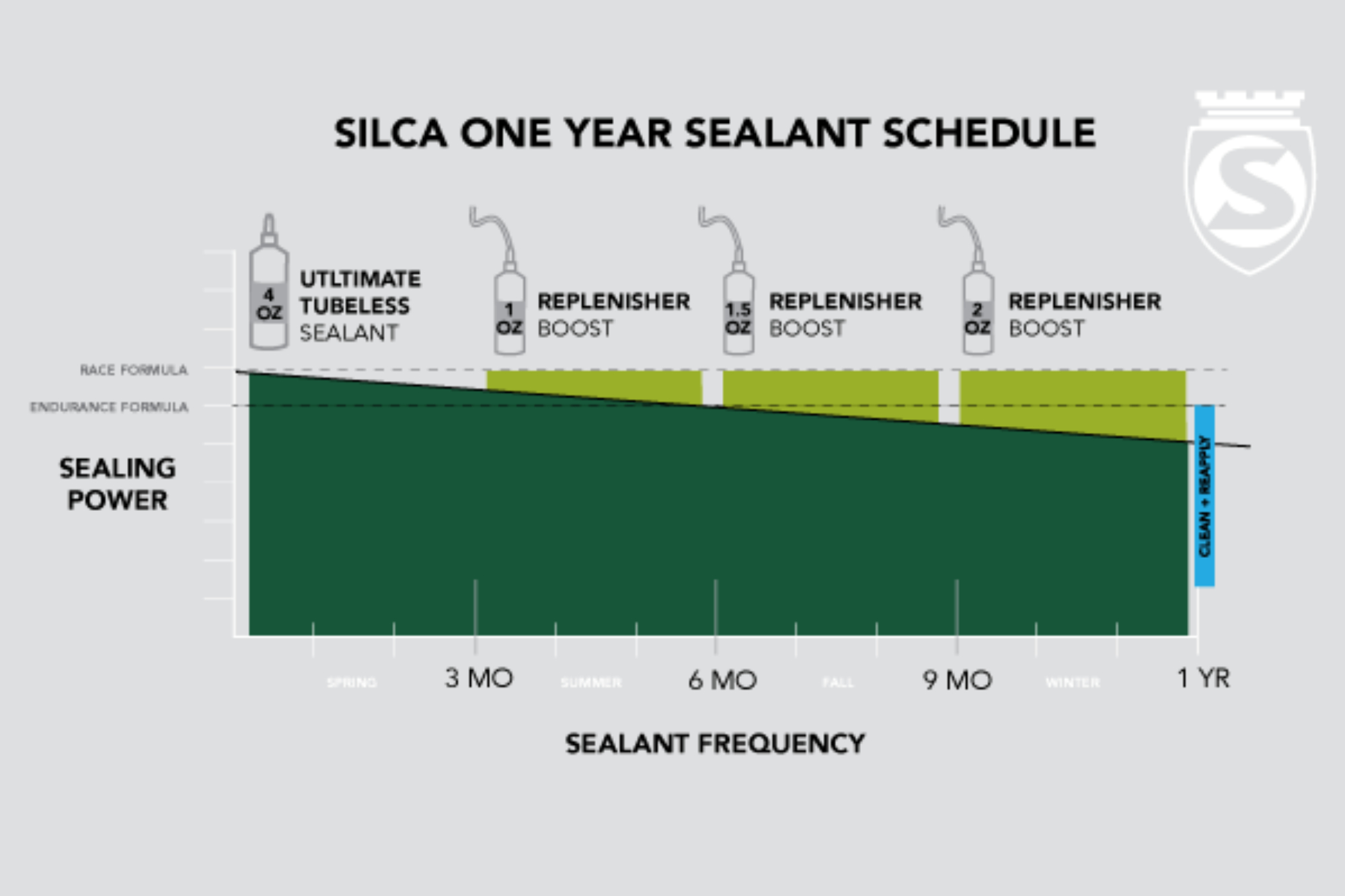
When it comes to whether your sealant has dried up, averages are all very well, but it is sometimes nice to have a bit more reassurance than that. Less effective sealants can be sucked up through a syringe to be checked in on. But as that isn’t an option with Silca’s Ultimate Sealant, they suggest weighing your whole wheel once you’re all set up.
Then, you can just weigh the tyre periodically and add another 2oz – or whatever your setup needs – once that weight has been lost through the system. Asked about whether tyre wear makes a meaningful difference to the weight of the tyre, Silca responded that they haven’t found the effect of that significant enough to be an issue.
Environmental impact
Many antifreezes developed for the automotive industry can be quite environmentally unfriendly. Being part of a sealed system, they are, for the most part, easily containable and easier to dispose of in a way that limits the harm they cause to the environment.
It’s still not great, but when you contrast that with the de-icer used on aeroplanes that’s sprayed liberally all over, the negative impacts stand to be significantly worse. As a result, there has been a lot of work put in to make these de-icers more environmentally friendly – and it’s from these de-icers that Silca gets the antifreeze component of its sealant solution from.
The carbon fibres used in the sealant come from recycled sources too. At the moment, it’s quite hard to effectively recycle the carbon fibre from cars, aircraft and the like, so the supply is relatively small. But with more brands, such as Silca finding an application for it, hopefully this is something that will grow.
With the carbon used being bio-neutral and the non-toxic antifreeze, Silca claims that the environmental impact of the sealant is less than that the wearing of a hiking boot’s sole on a trail.
We've got a bottle of the sealant on the way and will posting a review as soon as we've got the measure of it.

Thank you for reading 20 articles this month* Join now for unlimited access
Enjoy your first month for just £1 / $1 / €1
*Read 5 free articles per month without a subscription

Join now for unlimited access
Try first month for just £1 / $1 / €1
Get The Leadout Newsletter
The latest race content, interviews, features, reviews and expert buying guides, direct to your inbox!

After winning the 2019 National Single-Speed Cross-Country Mountain Biking Championships and claiming the plushie unicorn (true story), Stefan swapped the flat-bars for drop-bars and has never looked back.
Since then, he’s earnt his 2ⁿᵈ cat racing licence in his first season racing as a third, completed the South Downs Double in under 20 hours and Everested in under 12.
But his favourite rides are multiday bikepacking trips, with all the huge amount of cycling tech and long days spent exploring new roads and trails - as well as histories and cultures. Most recently, he’s spent two weeks riding from Budapest into the mountains of Slovakia.
Height: 177cm
Weight: 67–69kg
-
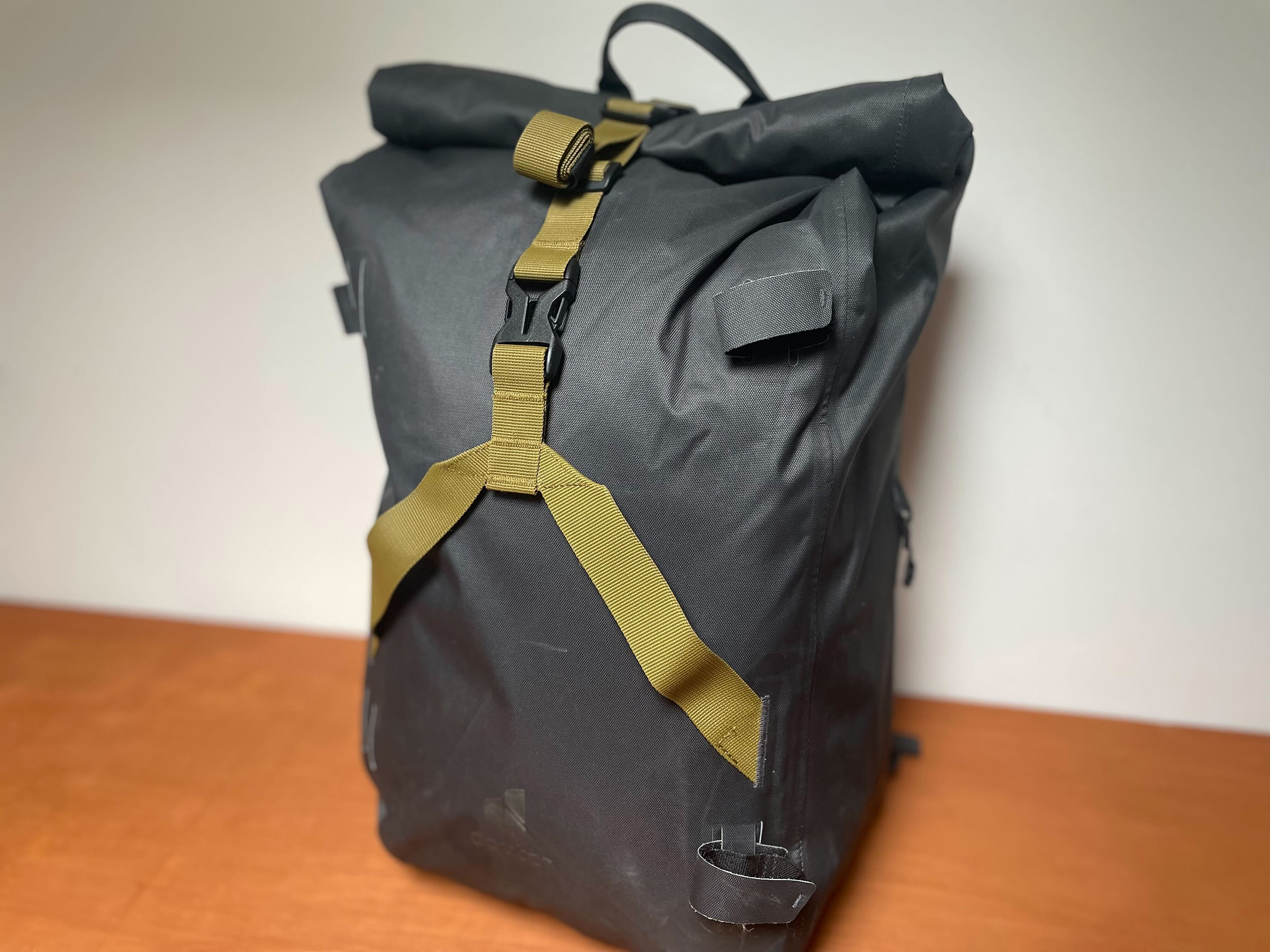 Deuter's 30ltr commuter backpack
Deuter's 30ltr commuter backpackA rolltop bag to fit a change of clothes and a sandwich. And keep them dry
By Simon Richardson Published
-
 The thing that bothers me most when I look back at old school training is that right now we’re doing something equivalently misguided
The thing that bothers me most when I look back at old school training is that right now we’re doing something equivalently misguidedOur columnist's old training diaries reveal old-school levels of lunacy
By Michael Hutchinson Published